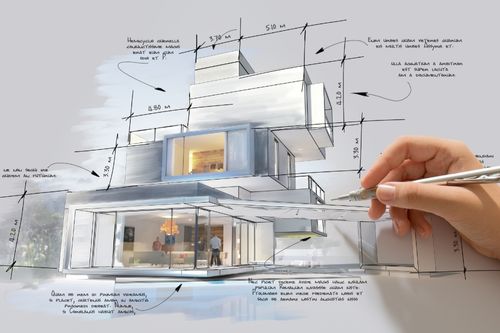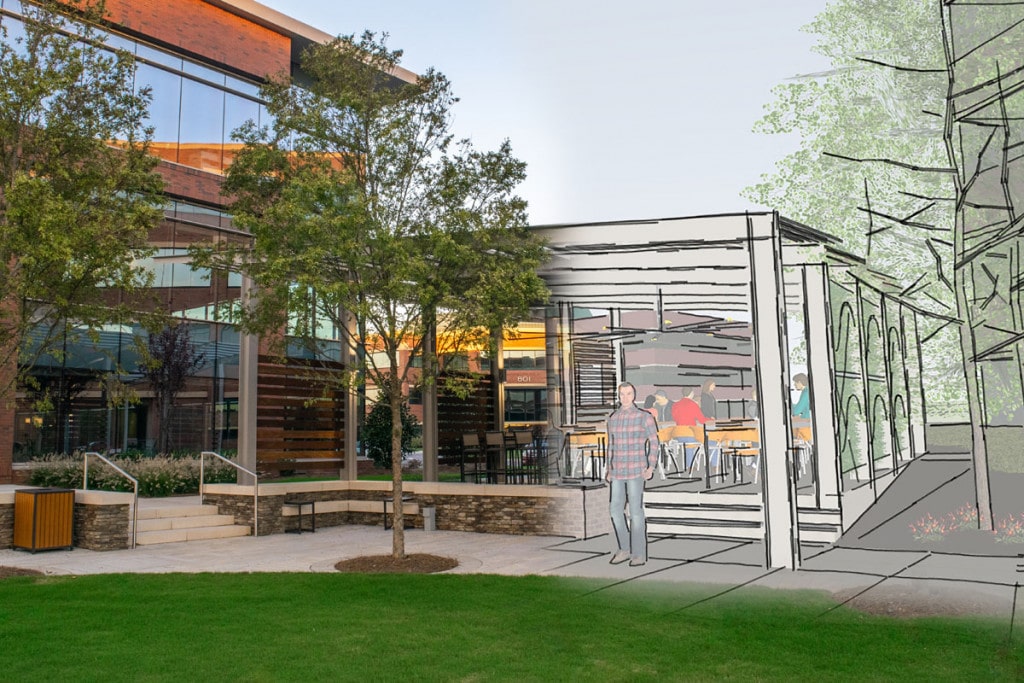Changing Areas: The Vision of CDA Architects for Modern Living
Changing Areas: The Vision of CDA Architects for Modern Living
Blog Article
A Detailed Overview of Architectural Styles and Their Influence on Modern City Planning and Advancement
Architectural designs have actually long acted as a mirror to the social values and technical innovations of their time, playing a crucial duty in shaping contemporary city planning and growth. From the grandeur of Neoclassicism to the utilitarian method of Brutalism, each style has actually introduced special ideas that influence city visual appeals and functionality. As modern difficulties emerge, including sustainability and neighborhood requirements, understanding these historic structures ends up being essential. The resulting discussion not just informs future design methods however likewise increases pertinent questions concerning the balance in between heritage and development in our developing city landscapes.
Historical Summary of Building Designs

As cultures transitioned through the Center Ages, Gothic style arised, defined by its verticality and detailed outlining, mirroring the spiritual desires of the age. The Renaissance noted a rebirth of classic perfects, combining art and design in cutting-edge manner ins which affected succeeding styles across Europe.

Today, architectural designs proceed to develop, driven by globalization and sustainability problems, mirroring a vibrant interaction in between heritage and development. This historical introduction emphasizes the relevance of design as a mirror of societal advancement and as a driver for city growth.
Trick Architectural Styles Explained
The diversity of architectural styles shows the myriad influences that form our constructed setting, each personifying distinctive features and social relevances. Trick building designs include Classical, Gothic, Baroque, Modernism, and Postmodernism, each representing unique historic contexts and aesthetic ideologies.
Classic design, rooted in ancient Greece and Rome, emphasizes proportion, percentage, and the usage of columns (cda architects). In contrast, Gothic architecture, thriving in the center Ages, is characterized by pointed arcs, ribbed safes, and flying buttresses, producing an angelic quality in cathedrals. Baroque architecture, emerging in the 17th century, is marked by majesty, elaborate embellishment, and a vibrant interplay of light and shadow
Innovation, which acquired momentum in the early 20th century, prioritizes function over kind, utilizing brand-new products like steel and glass to develop minimalist frameworks. Postmodernism, responding versus the austerity of Innovation, accepts eclecticism and historic referral, typically including lively components and paradox.

Influence On Urban Planning
In shaping the advancement of cities, building styles substantially influence city preparation decisions. The selection of building style often dictates the aesthetics, this contact form functionality, and general character of city atmospheres.
Additionally, architectural designs can affect zoning laws and land use plans. Urban planners have to consider the prevailing building trends when designing areas, making sure that new developments integrate with existing frameworks. This consideration cultivates natural city landscapes and improves neighborhood identification.
The execution of specific architectural designs can also influence socioeconomic variables within a city. For instance, high-end contemporary styles may attract wealthy locals and services, bring about gentrification, while more budget-friendly housing services could prioritize useful and sustainable layouts to suit diverse populaces. Ultimately, the interaction in between building designs and city planning develops vibrant cities that show both historic context and contemporary requirements, shaping the lived experiences of their citizens
Sustainability and Modern Style
Architectural designs play a critical role in dealing with contemporary difficulties, specifically in the realm of sustainability. As metropolitan areas increase and environmental problems magnify, modern-day style increasingly embraces sustainable design concepts that focus on energy performance, source preservation, and marginal ecological effect.
Contemporary architectural motions, such as biophilic design and environment-friendly design, supporter for structures that integrate with their environments, using natural products and advertising biodiversity. These styles typically include eco-friendly energy sources, such as photovoltaic panels and wind turbines, to decrease dependence on fossil fuels and reduced carbon footprints.
In addition, the integration of advanced modern technologies, such as clever building systems, boosts energy management, optimizing source usage while ensuring owner convenience. Innovative water administration approaches, including rainwater harvesting and greywater recycling, additional add to lasting urban environments.
Notably, sustainability prolongs beyond environmental concerns; it encompasses social and financial measurements too. By fostering neighborhood well-being and advertising inclusivity, modern-day building styles straighten with lasting development objectives. Consequently, the evolution of building practices check that remains to shape durable cities that not just satisfy the requirements of the existing but likewise secure the future for generations to come.
Neighborhood Involvement in Layout
Community engagement in layout works as an essential bridge between designers and the populations they serve, making sure that the built atmosphere mirrors the demands and goals of its individuals. This joint procedure invites neighborhood participants to add their understandings and choices, fostering a sense of ownership and obligation toward the rooms they populate.
Effective neighborhood interaction employs various techniques, such as workshops, studies, and public discussion forums, to collect diverse viewpoints. These strategies facilitate a two-way discussion, allowing architects to understand neighborhood contexts while empowering locals to articulate their problems and needs. This inclusivity not just enhances the layout quality but also promotes social equity by addressing the one-of-a-kind challenges dealt with by marginalized groups.
Additionally, neighborhood interaction can result in ingenious options that could not arise in a conventional design procedure. By integrating neighborhood understanding and cultural worths, engineers can develop rooms that reverberate even more deeply with customers, boosting usability and my company sustainability. Ultimately, focusing on community interaction in layout procedures causes atmospheres that support social interactions, support health, and reinforce community connections, consequently playing a critical duty in forming contemporary metropolitan landscapes.
Conclusion
Architectural designs have profoundly affected modern city planning and advancement, showing developing cultural and technological contexts. The combination of historical aesthetic appeals with contemporary needs promotes urban settings that focus on sustainability and neighborhood interaction. As cities continue to expand and adapt, the recurring dialogue in between building heritage and modern-day layout concepts will certainly continue to be essential in creating comprehensive, dynamic spaces that boost top quality of life and advertise social equity. The future of urban development rest on this unified equilibrium.
Report this page